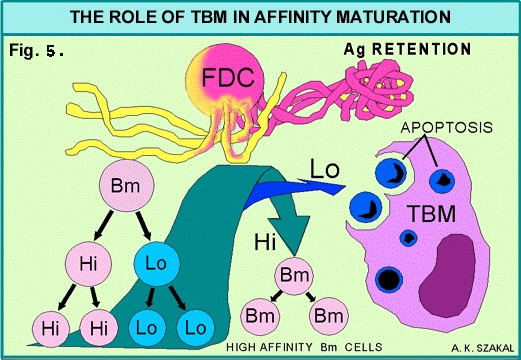|
(5) Germinal centers
may also be produced in the late phase of the primary antibody
response when antibodies to an antigen first become available
(See Figs. 3 and 4). Germinal center development begins in the
secondary Ab response at the time the antigen enters the body
since Ab (IgG) is already available for immunecomplex formation,
needed for antigen transport and Ag-trapping by FDCs.
(6) Feedback
inhibition and activation. When the germinal center reaction
results in the production of high levels of specific Ab, the AB
feeds back to the FDC antigen and covers up the antigenic sites.
At the same time the FDC dendrites form a "ball of yarn"-like
structure with the immune complexes on the inside of the "ball."
At that time no B cells can be activated by the FDC-Ag because
the Ag is hidden. This process is feedback inhibition.
After weeks, AB levels drop and to maintain equilibrium between
bound and free AB, AB dissociates from the immune complexes on
the FDC. The "balls" unravel and the Ag becomes exposed and a
new cycle of germinal center reaction begins. This will result
in bringing the AB level up and as a result immunity is maintained.
This cycle may be repeated as long as there is Ag left on the
FDCs. Once Ag is used up, a booster immunization may be in order.
|
